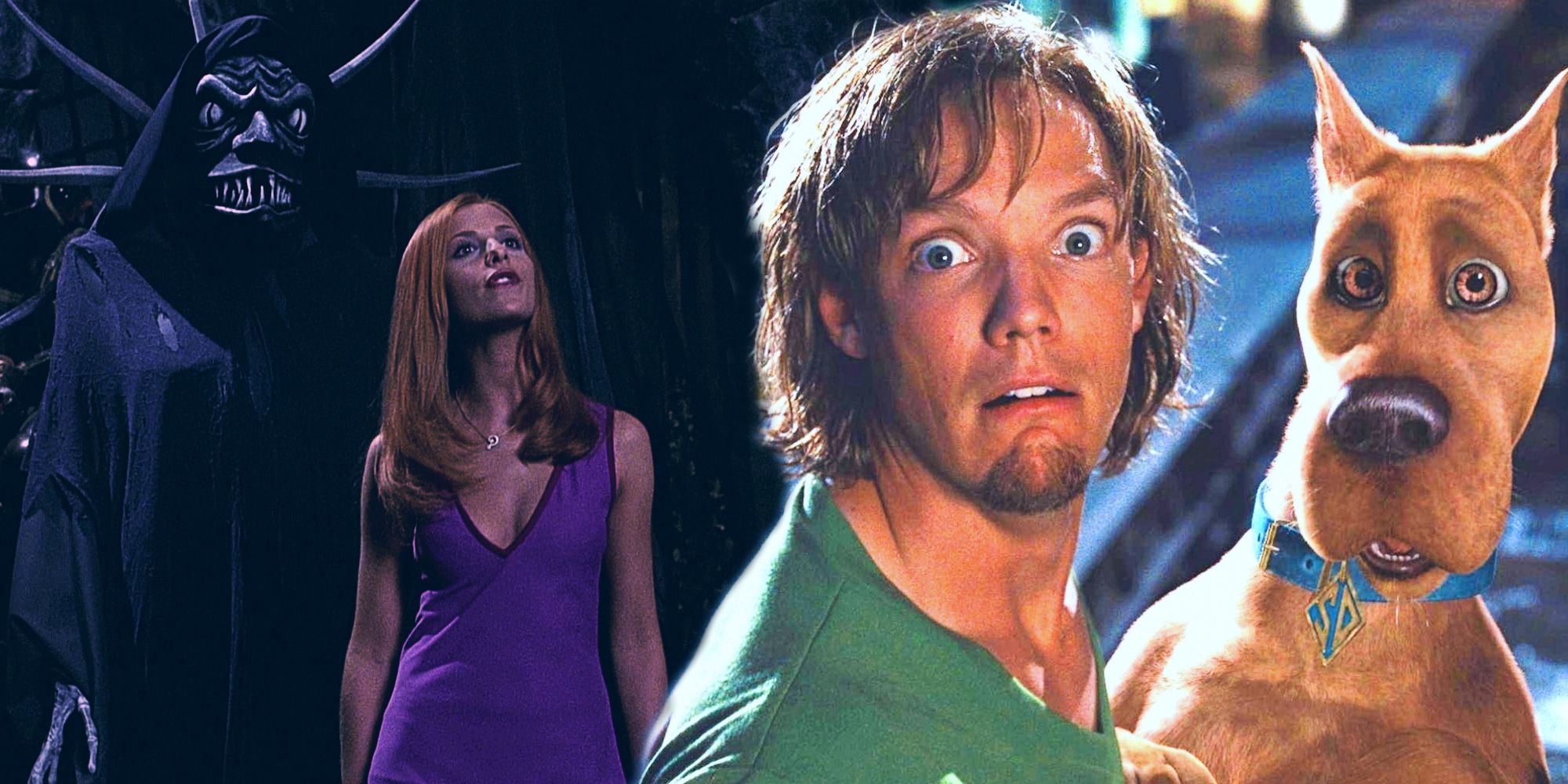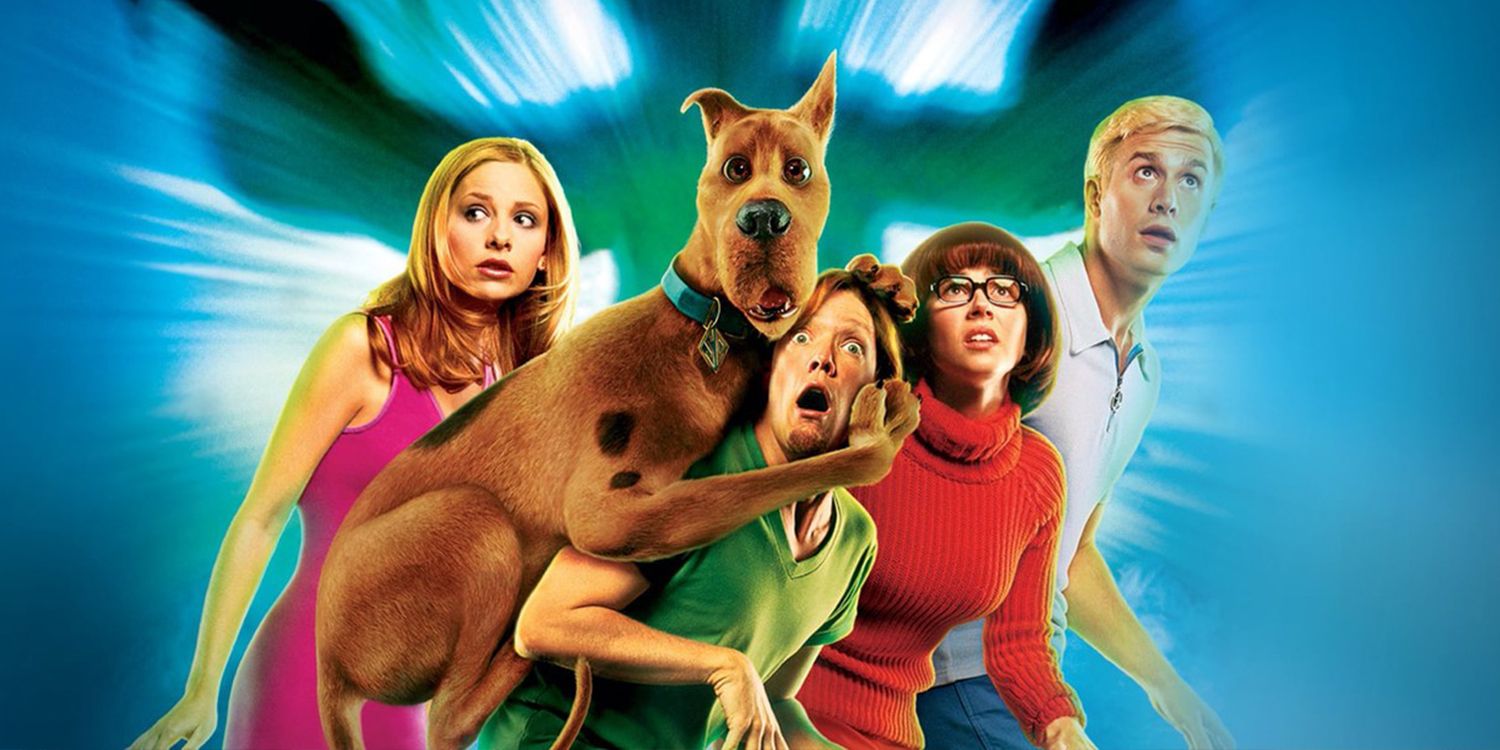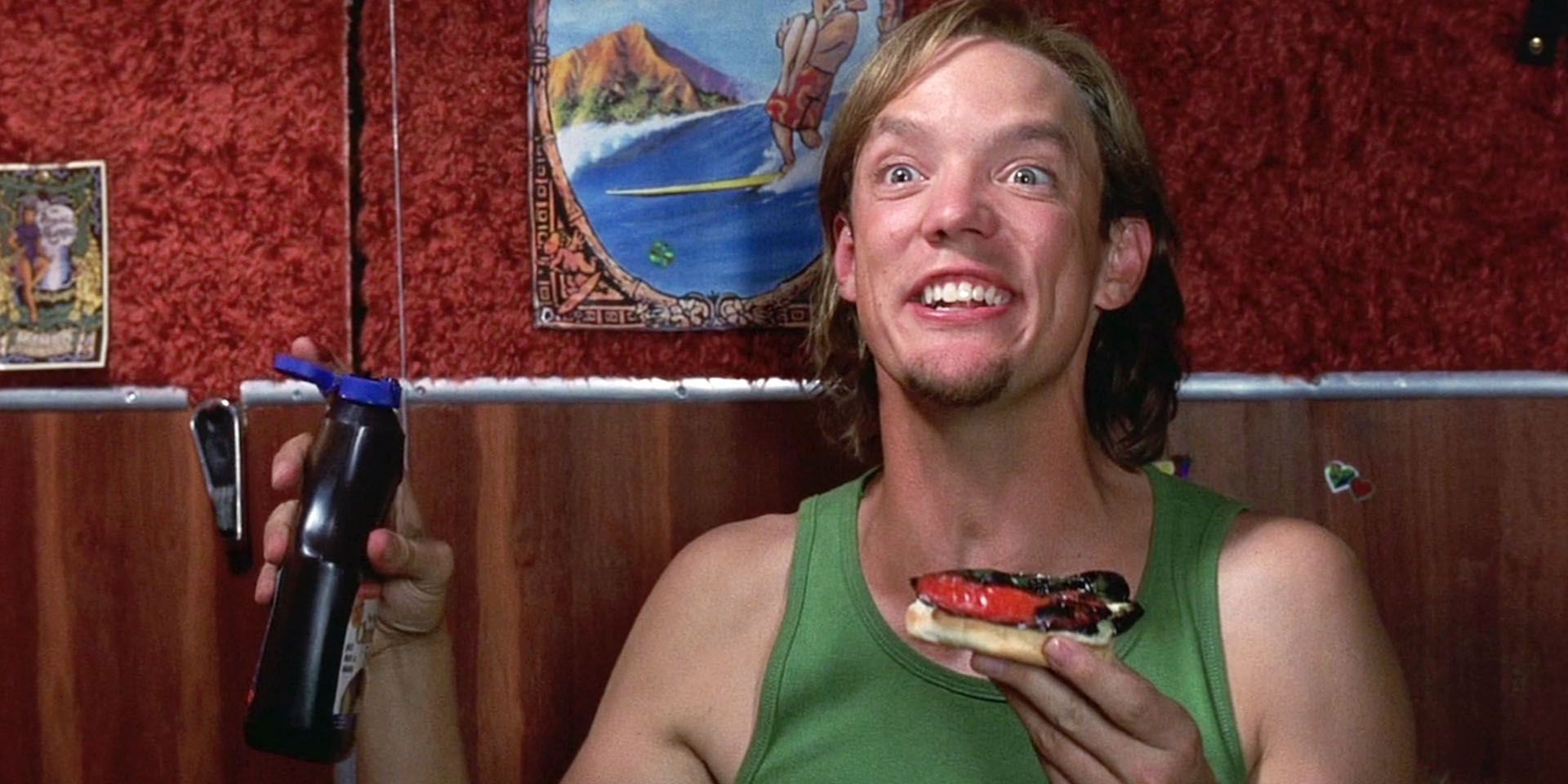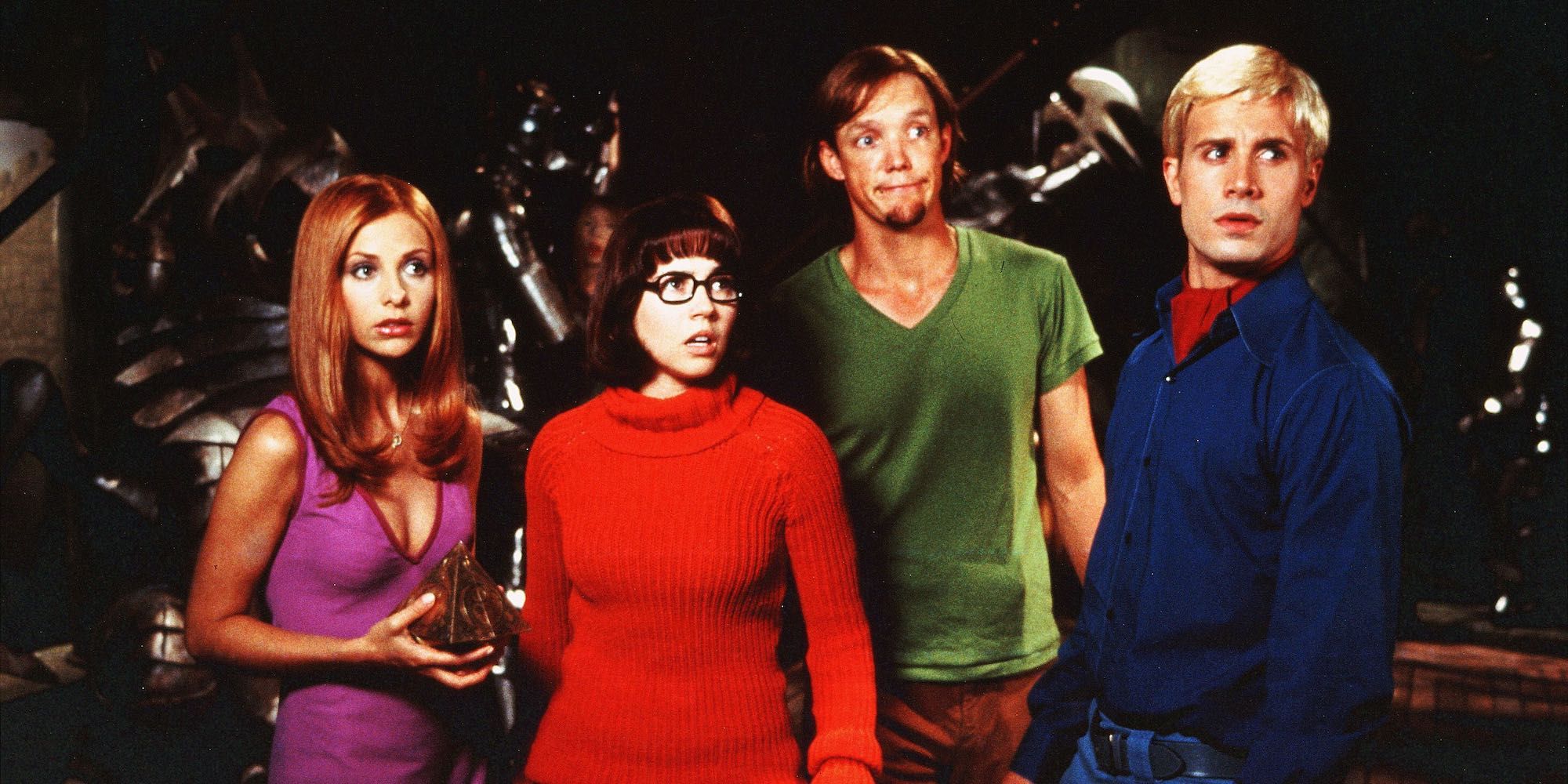New details on Scooby-Doo's R-rated Gosnell cut secretly prove how amazing the original movie was. First released on June 14th, 2002, director Raja Gosnell and writer James Gunn's movie represents the first live-action Scooby-Doo franchise installment before spawning a sequel via Scooby-Doo 2: Monsters Unleashed. Despite a lukewarm critical reception upon release, Scooby-Doo 2002 has since garnered a cult following, owing in no small part to the movie's much-hyped R-rated cut that has never seen the light of day.
After a two-year split, Scooby-Doo sees Mystery Incorporated reunite to investigate supernatural occurrences at popular horror-themed tropical island resort Spooky Island. Although initially greeted by scenes of revelers on vacation, Fred (Freddie Prinze Jr.), Daphne (Sarah Michelle Gellar), Velma (Linda Cardellini), Shaggy (Matthew Lillard), and the titular Scooby (Neil Fanning) quickly reveal Spooky Island to be a hotbed for demonic activity masterminded by their tenacious ex-Mystery Inc. member Scrappy-Doo (Scott Innes).
For the first time, brand new details regarding Scooby-Doo's lost R-rated cut prove how amazing the 2002 movie really was. 20 years after Scooby-Doo's initial release, a YouTube interview with Scooby-Doo editor Kent Beyda has shed light on the content of the movie's R-rated cut. Presenters JayBee & Milly, in association with smASH's Ashton Hardy, speak at length with Beyda to get the long-awaited details of the omitted Scooby-Doo scenes known as the "Gosnell cut" after the movie's director. As a result, here's how Scooby-Doo's lost R-rated cut secretly proves how amazing it was upon release, as well how the film was critically received back in 2002.
Scooby-Doo’s Critical Reception In 2002
While a commercial success in 2002 raking in over $275 million at the box office, Scooby-Doo's critical reception left a lot to be desired upon release in 2002. In particular, much of the critical reviews' ire was directed at Scooby-Doo's slapstick and flatulence-based humor, with many reviews for the movie citing it as packed with disposable, lowest common denominator style gags. Others took issue with the film's failure to evoke a genuinely nostalgic response from audiences despite being based on the classic Hanna-Barbera cartoons of old, as well as noting the film's themes of possession and demonic rituals felt at odds with the original cartoon's microcosmic and neat mystery capers.
This said, some elements of Scooby-Doo still drew sufficient praise from many critical quarters. Much of the goodwill directed towards Scooby-Doo in 2002 was owed to Matthew Lillard's uncanny performance as Shaggy, with the Scream and SLC PUNK! star a dead-ringer for Scooby's spacy owner. Sarah Michelle Gellar also won the Choice Movie Actress – Comedy award at the 2002 Teen Choice Awards for her turn as the ditsy-yet-determined Daphne Blake.
What Scooby-Doo Changed From The Original R-Rated Cut
As detailed by Kent Beyda in the aforementioned JayBee & Milly interview, swathes of content were cut from the final Scooby-Doo version to make it more palatable for family audiences. James Gunn's original script, and the subsequent Gosnell cut, was designed to "appeal to all ages" rather than aiming for the PG rating it eventually received. Many of these changes to the Gosnell cut were enacted en-masse following several nightmare preview screenings for families, in which the attending parents reacted poorly to the majority of Scooby-Doo's content.
The test audiences forced changes to Scooby-Doo's monsters, downgrading them from genuinely scary "demons from space" to the cartoonish versions seen in the final Scooby-Doo cut. Gosnell and company were also forced to edit chunks of the movie's dialogue due to religious connotations, changing every instance of the word "demon" to "monster" and "soul" to "protoplasm" to placate its target audience age demographic. In Gunn's original script, the demons also infiltrate the Pentagon in the Scooby-Doo post-credits scene, although this too was eventually cut due to poor test reactions.
Outside of these wholesale monster changes, Scooby-Doo had to axe a number of its running gags and plotlines in order to comply with its eventual PG rating. Many jokes showing Shaggy as an out-and-out "stoner" were cut to avoid overt drug references, while Daphne and Velma were also originally planned to embark on a lesbian romance, much to Fred's chagrin. Other cut scenes include Velma taking her shirt off drunk at the Spooky Island bar while Cypress Hill's "Insane in the Brain" blares, while island owner Emile Mondavarious (Rowan Atkinson) also had several lines referencing casual drug use in the Spooky Island theme park and resort.
Why Scooby-Doo’s Lost R-rated Cut Proves How Amazing It Was
As a result, Scooby-Doo seemingly lost almost a third of its material on the editing table as Beyda, and the rest of the editing team scrambled to change the movie in post-production. The hurried nature of changing an R-rated movie to a PG one is evident in many of Scooby-Doo's scenes and seemingly competing narratives at first glance. Scooby-Doo's demons, for example, possess Mary Jane (The Great Gatsby's Isla Fisher) terrifyingly by wearing her face before suddenly becoming bumbling caricatures in subsequent scenes. Shaggy's character is another perfect example here, with scenes such as the Mystery Machine smoking while Musical Youth's "Pass the Dutchie" plays and Shaggy telling Mary Jane how much he loves her name at odds with his more clean dialogue in other portions of the film.
In this way, this new information regarding Scooby-Doo's lost R-rated cut proves how amazing the movie truly was at the time in 2002. The fact that Gosnell, Beyda, and company managed to cobble together a cohesive, genuinely enjoyable movie from the carcass of James Gunn's more zany R-rated Scooby-Doo is highly impressive. Scooby-Doo, therefore, deserves all the praise and recognition it receives in contemporary culture, particularly in the past couple of years as several outlets have led a reconsideration of Gosnell's 2002 picture. Scooby-Doo is by no means a seminal film, or indeed an always cohesive one, but the true story behind its lost R-rated cut nonetheless proves how amazing of a movie it was in 2002 despite all the obstacles that stood in its way.




